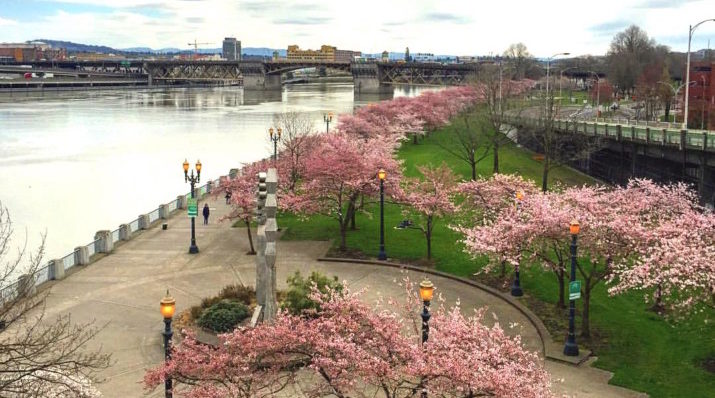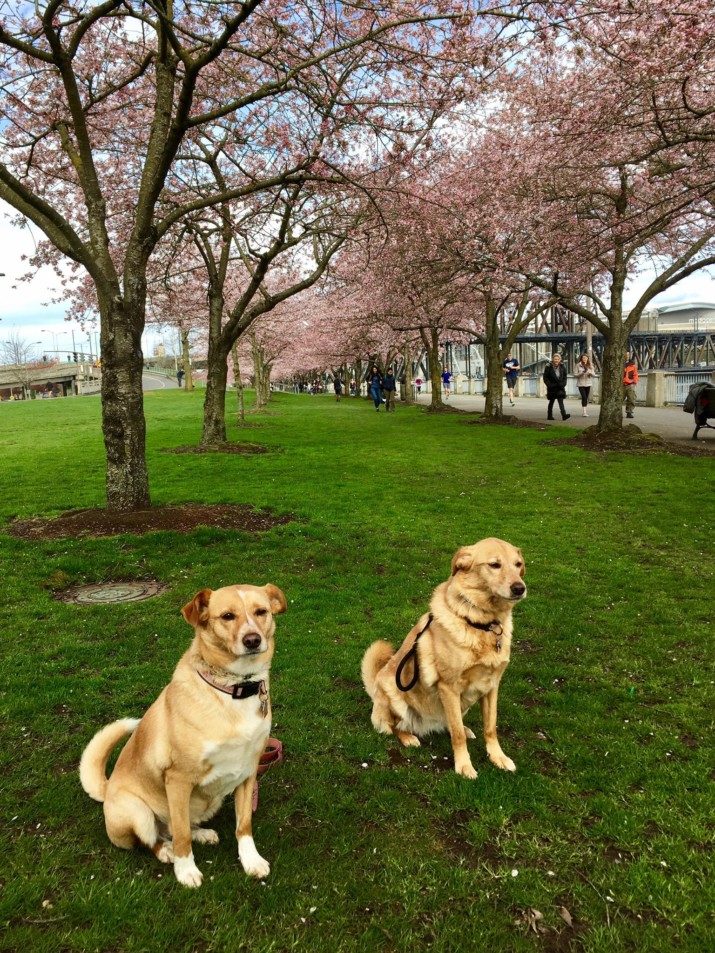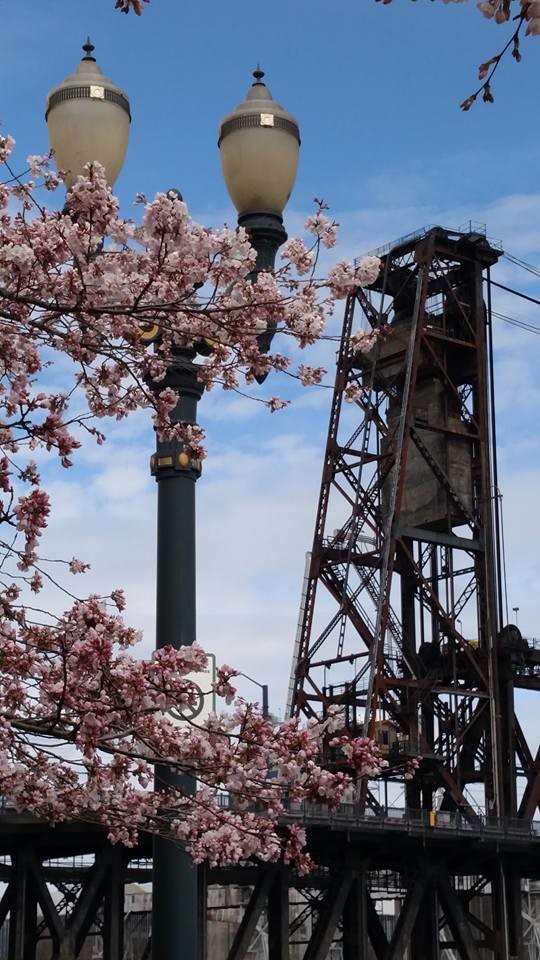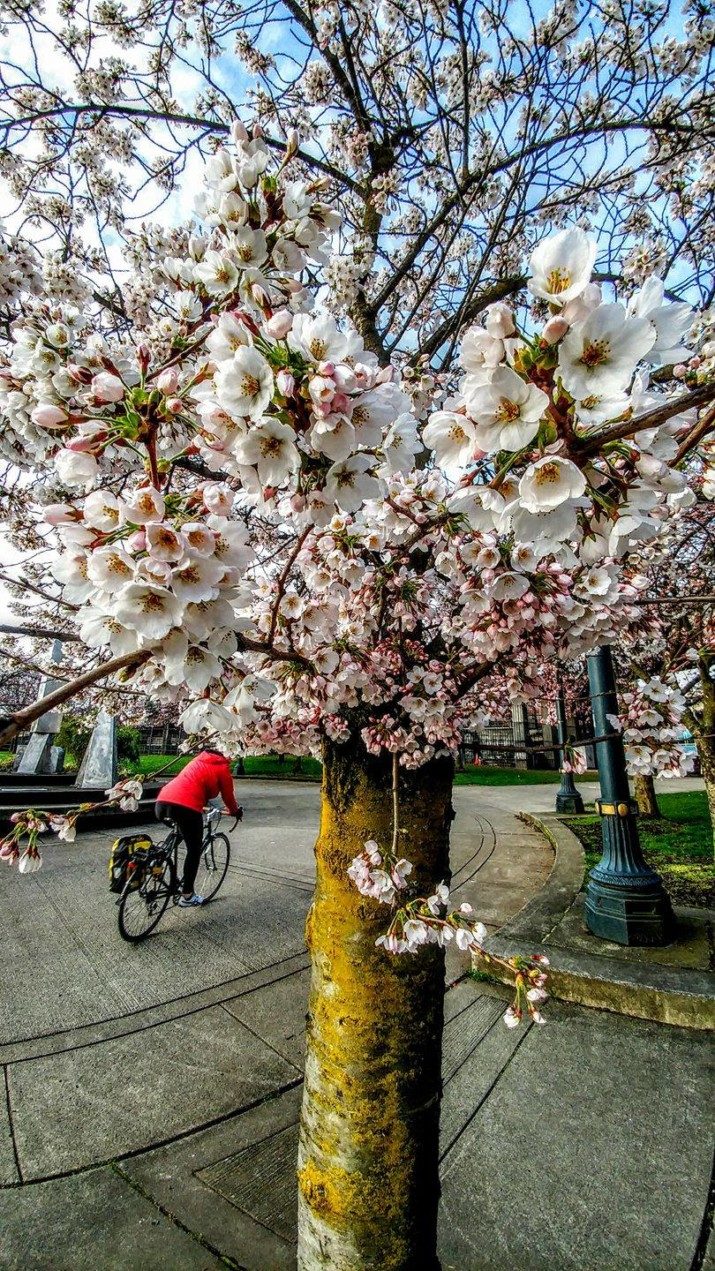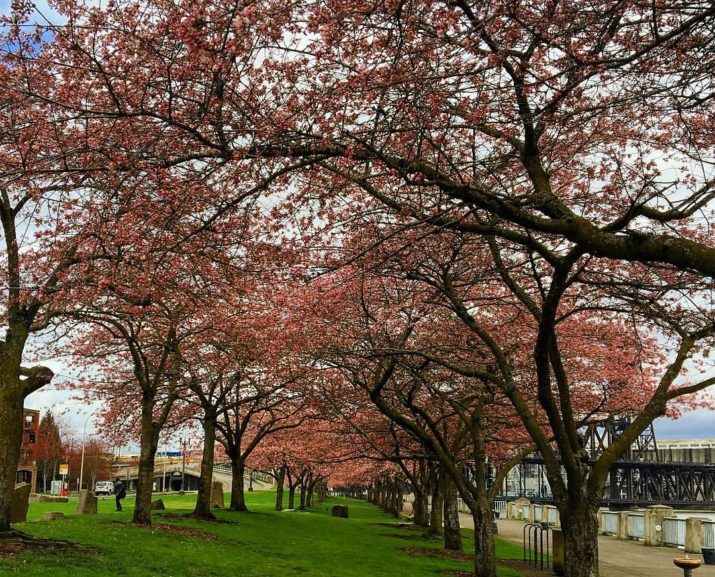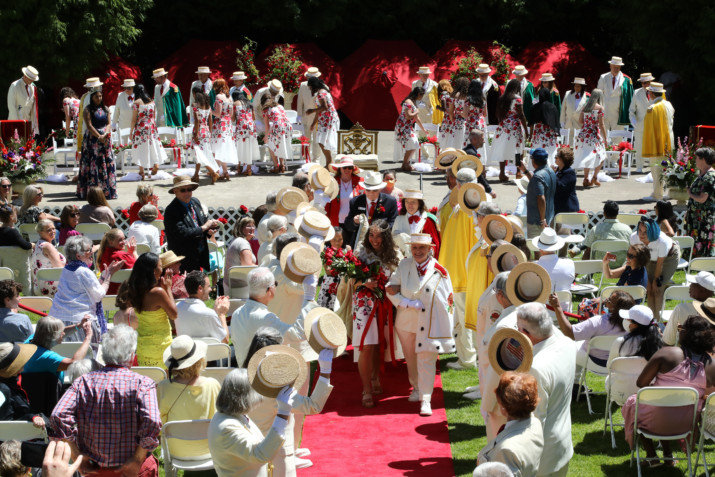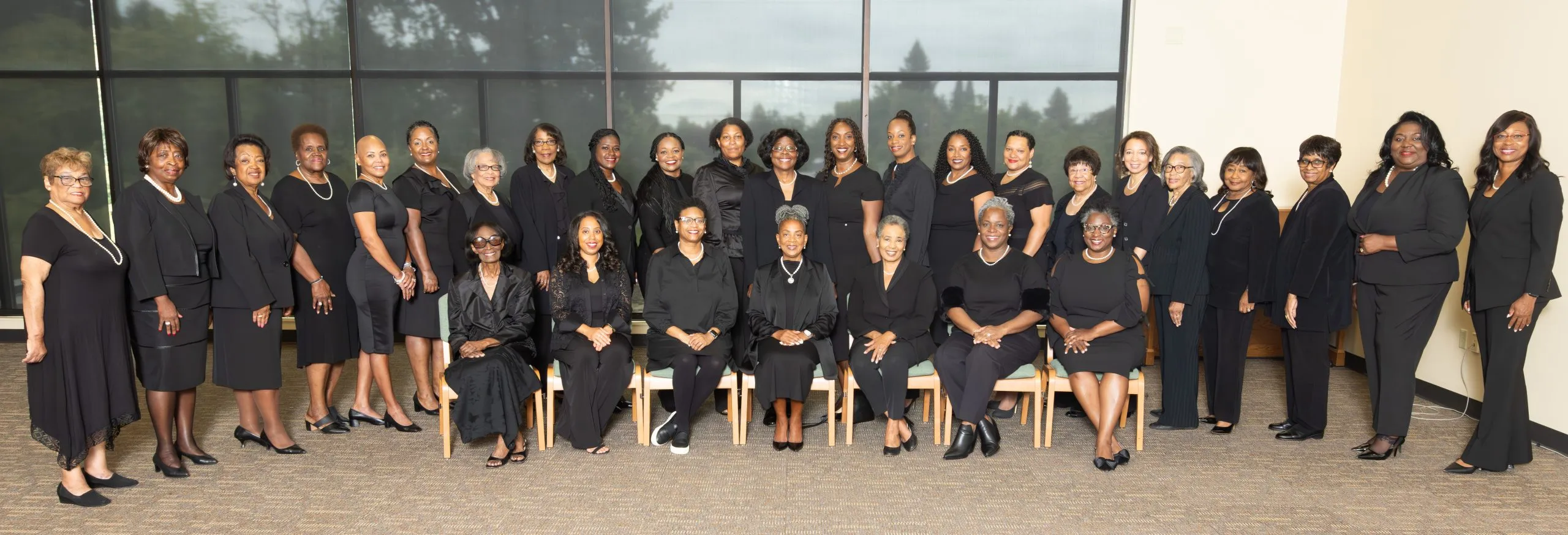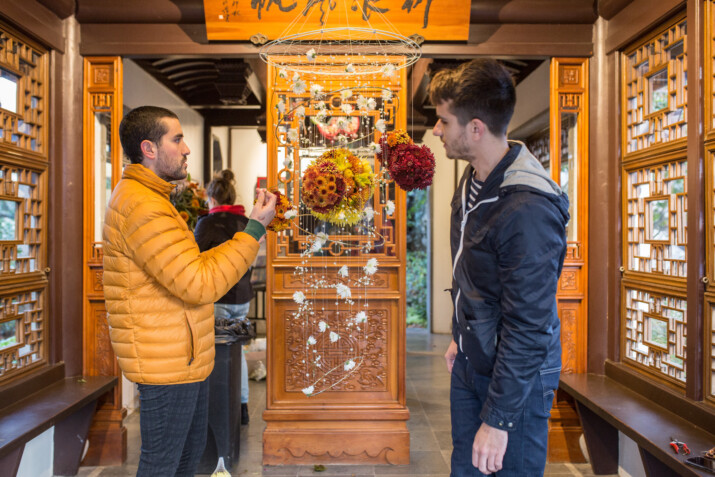Portland, OR. Residents and visitors can’t resist snapping photos of Ornamental Cherry Trees in Waterfront Park. The Japanese American Historical Plaza was dedicated on August 3, 1990, in memory of Japanese immigrants and native-born U.S. citizens of Japanese descent who were deported to inland internment camps during World War II. The memorial includes artwork and sculpture that tells the story of Japanese people in the Pacific Northwest. There are one hundred ornamental cherry trees to the north of the plaza. Colorful snapshots abound.
Here’s some history about the Japanese American Historical Plaza:
Using thirteen engraved stones of basalt and granite, the Japanese American Historical Plaza in Portland tells an important story of the Japanese in Oregon. Landscape architect Robert Murase created the theme and design of the plaza to tell the story of the hardships suffered by Japanese immigrants and the indignities imposed by the incarceration of persons of Japanese ancestry during World War II. The plaza shows how the rights of Japanese Americans on the West Coast were denied, and honors the bravery of those who served in the U.S. Armed Forces while their families were in the camps.
The story continues with poems inscribed on stones. The stone at the center of the plaza lists the ten internment camps. The base of this stone is surrounded by flagstones with jagged sides laid out in irregular patterns reflecting the broken dreams of the internees.
Poets Lawson Inada (Ashland), Shizue Iwatsuki (Hood River, deceased), Masaki Kinoshita (Portland, deceased), and Hisako Saito (Portland, deceased) composed the inscribed poems.
Murase was inspired to design the plaza while attending a Day of Remembrance memorial, which Japanese American communities hold throughout the country to remember February 19, 1942, the day President Franklin D. Roosevelt signed Executive Order 9066. The order was the first step that led to the imprisonment of 120,000 persons of Japanese ancestry on the West Coast. In March, 1942, the U.S. Army posted exclusion orders in towns and cities on the West Coast, advising all persons of Japanese ancestry to prepare to be evacuated from their homes and businesses.
In the spring of 1988, the City of Portland decided to complete the north end of the Tom McCall Waterfront Park, which borders the Willamette River and Nihomachi, the area known as Japantown, where many Japanese lived and worked before the war. Murase had discussed his concept with Portland businessman and visionary Bill Naito (1926-1996), who encouraged him to complete a design. Under the sponsorship of the Japanese American Citizens League, Murase submitted his proposal and it was accepted in 1988.
The Historical Plaza, which presents poems of Japanese experiences, is a permanent reminder of the importance of the U.S. Constitution and the Bill of Rights. The last stone has a bronze plaque with excerpts from the Civil Liberties Act of 1988, which includes an apology for the unlawful imprisonment of people of Japanese ancestry during World War II.
Since its dedication in August 3, 1990, the Japanese American Historical Plaza has received the Waterfront Center’s Top International Award, two national awards, one state award, and four Metropolitan awards. Oregon Nikkei Endowment, Inc. (O.N.E.), a nonprofit organization, administers the plaza and the Oregon Nikkei Legacy Center.


